Introduction

This blog gives an overview of the Oracle LiveLab for TimesTen Cache.
The LiveLab covers the following:
- Introduction
- Initlialize the workshop environment
- Create a TimesTen Instance
- Prepare the Oracle Database for caching
- Prepare the TimesTen Cache
- Load Oracle data into the cache
- Verify automatic cache refresh for static caches
- Compare OLTP throughput for Oracle 19c and TimesTen 22.1 Cache
- Compare query latency for Oracle 19c and TimesTen 22.1 Cache
- Use dynamic cache groups
- Shutdown the TimesTen Cache and instance
Prerequisites

- Familiarity with basic relational database concepts (tables, indexes, SQL) is required
- Basic familiarity with Oracle Database and SQL*Plus is helpful, but not required
- Able to copy-and-paste commands or scripts on the Linux command-line
- Either use:
- An existing account on Oracle Cloud which can support 4 OCPU and 64 GB RAM
- Or schedule a LiveLab sandbox
Runtime Environment
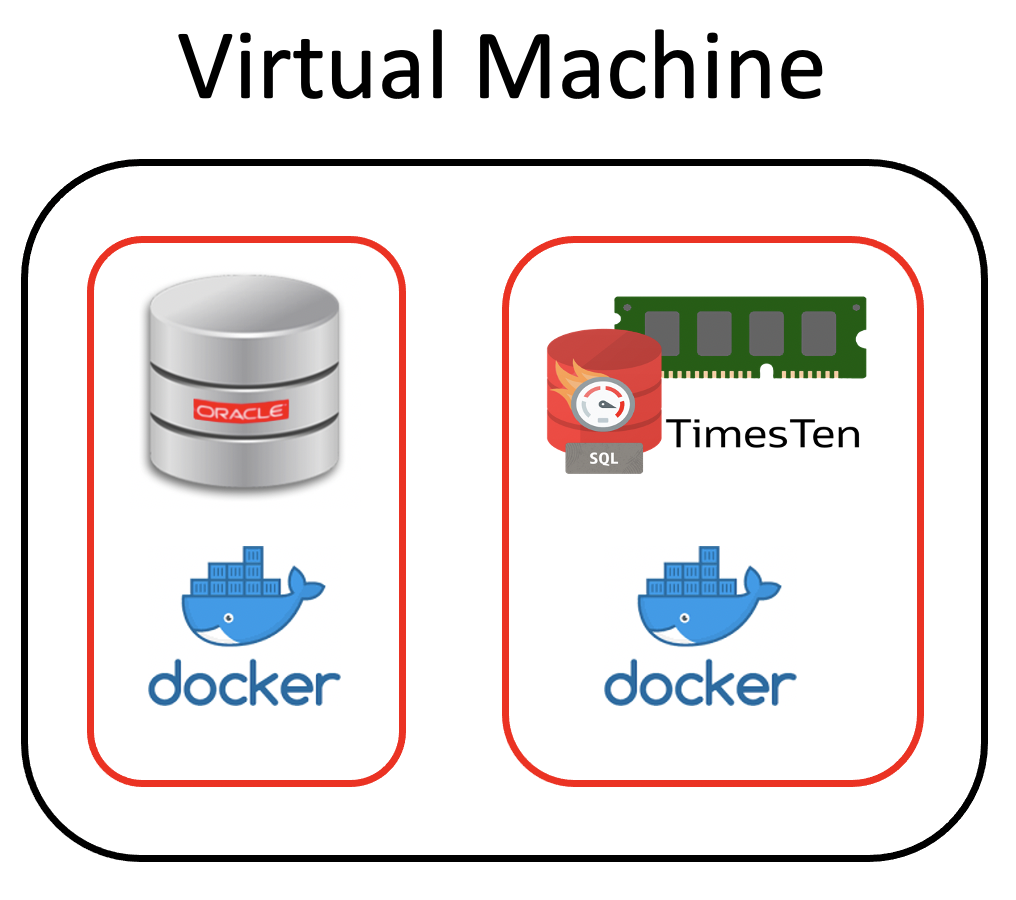
This LiveLab uses a Virtual Machine on Oracle Cloud
- Oracle Database 19.3 runs in a Docker container in the LiveLab VM
- TimesTen 22.1 runs in a Docker container in the LiveLab VM
- The VM should have 4 OCPU and 64 GB RAM
How to start the LiveLab
The Oracle TimesTen Cache Live Lab is here.
You can also access the Live Lab via searching for Oracle Live Labs in your browser.
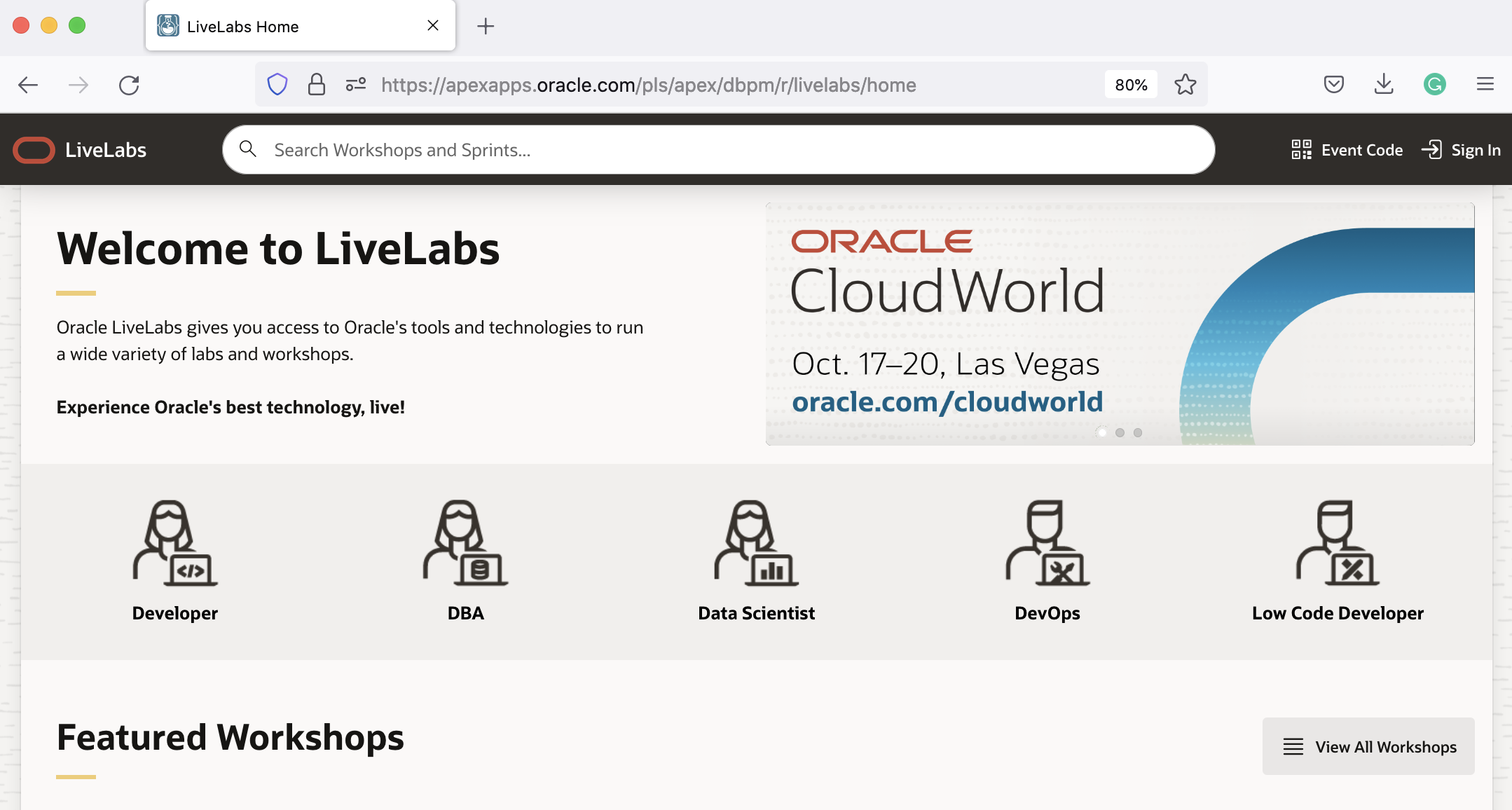
From the LiveLabs home page, enter TimesTen in the LiveLabs search bar
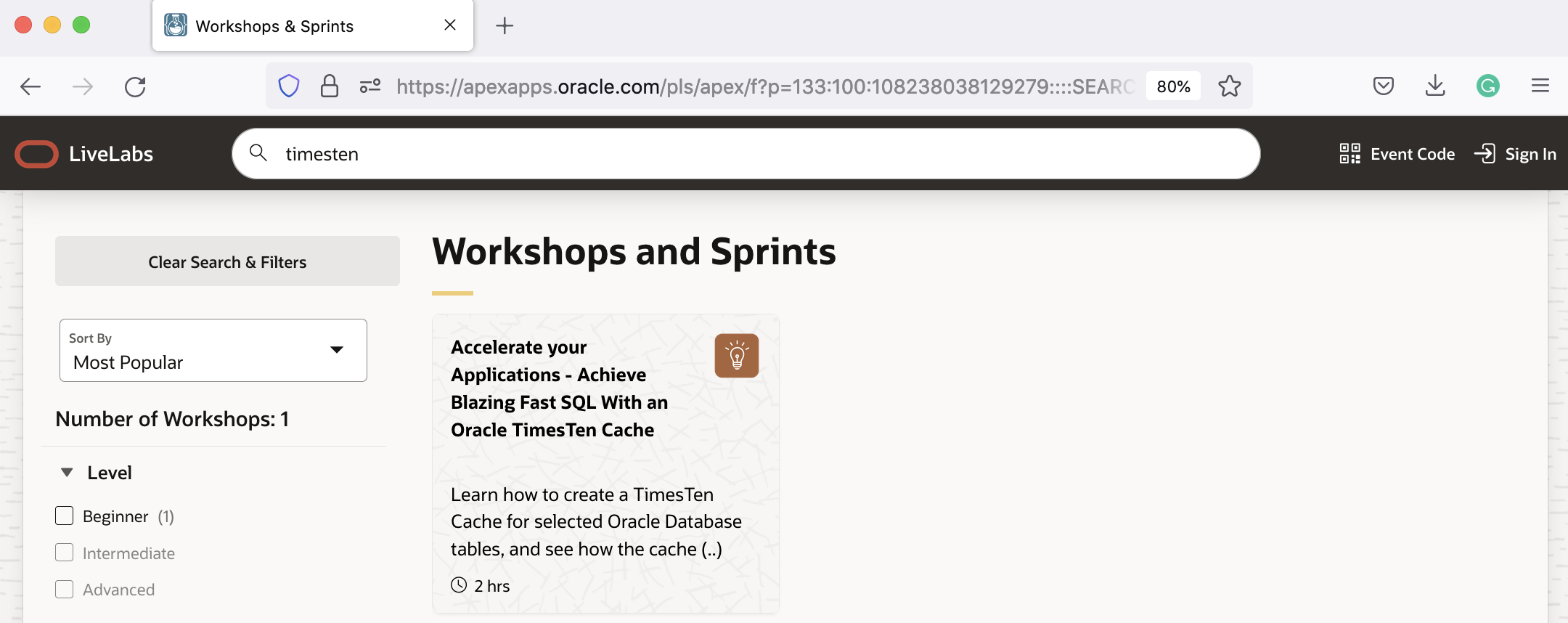
Click on the workshop called Accelerate your Applications – Achieve Blazing Fast SQL with an Oracle TimesTen Cache
A peek at some of the LiveLab results
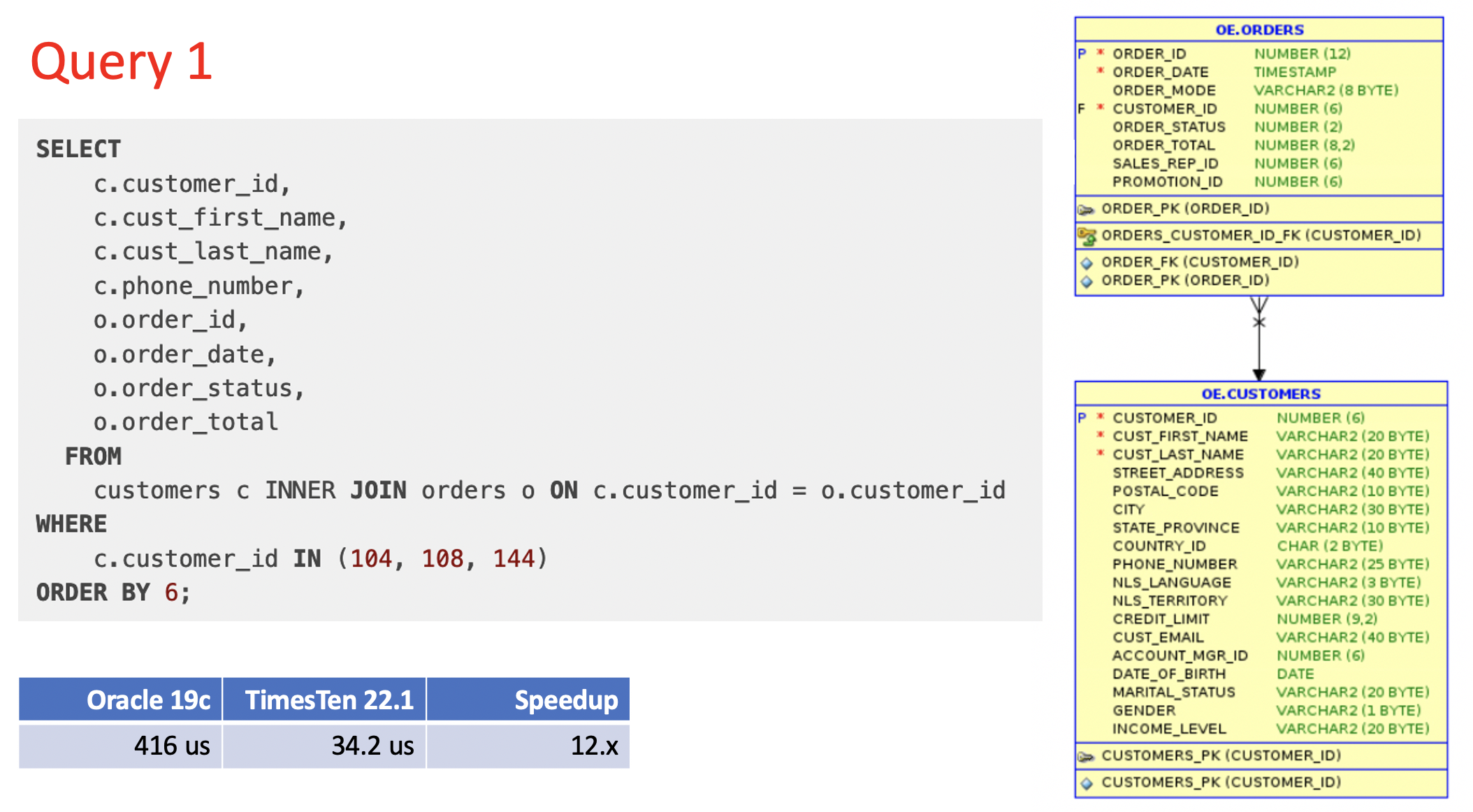
- TimesTen supports ANSI SQL for queries
- TimesTen Cache is up to 12x faster than Oracle for this simple join in the OE [Order Entry] schema
- You can run this comparison yourself in the LiveLab

- TimesTen also supports Oracle style joins
- This four table join was about 14x faster than Oracle for the OE schema
- You can run this comparison yourself in the LiveLab

- This query uses a non indexed column in the SQL where cause
- This query was about 14x times faster than Oracle for the OE schema
- You can run this comparison yourself in the LiveLab
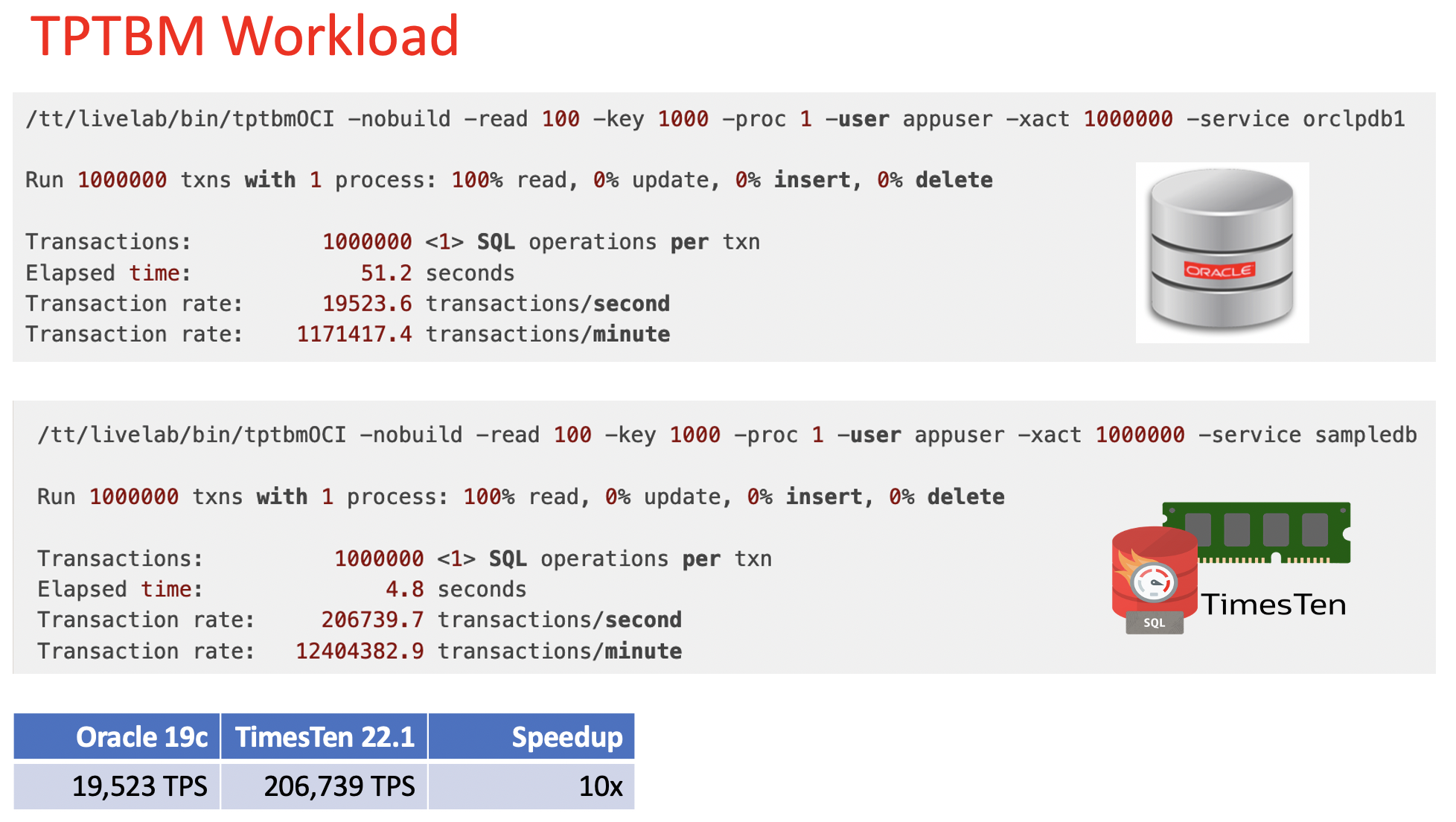
- This throughput workload ran against both Oracle and TimesTen Cache
- TimesTen Cache gave about 10x more throughput than Oracle
- The same C/OCI program was used with both Oracle and TimesTen Cache
- The C/OCI program did not be to be re-compiled or re-linked
- The TNS service name determines whether the C/OCI program connects to Oracle or TimesTen Cache
Summary
- The LiveLab for Oracle TimesTen Cache runs on Oracle Cloud
- You can either use your tenancy or the LiveLab sandbox
- The LiveLab covers full lifecycle management for TimesTen Cache
- Step-by-steps instructions are provided for the LiveLab workshop
- You can compare the latency and throughput of Oracle 19.3 and TimesTen 22.1 Cache
Learn more about TimesTen XE:
- Oracle TimesTen XE Home Page
- Oracle TimesTen XE Download
- Oracle TimesTen XE Docker Container
- Oracle TimesTen Classic Home Page
- Oracle TimesTen Scaleout Home Page
- Oracle TimesTen VM with Hands On Labs
- Oracle TimesTen Documentation
More TimesTen XE Blogs
- An introduction to TimesTen XE
- How fast is TimesTen XE
- How to create a database on TimesTen XE
- TimesTen XE SQL
- TimesTen XE SQL Profiles
- Using TimesTen XE on WSL
- Using client/server without config files on TimesTen XE
- Using client/server with config files on TimesTen XE
Disclaimer: These are my personal thoughts and do not represent Oracle’s official viewpoint in any way, shape, or form.
